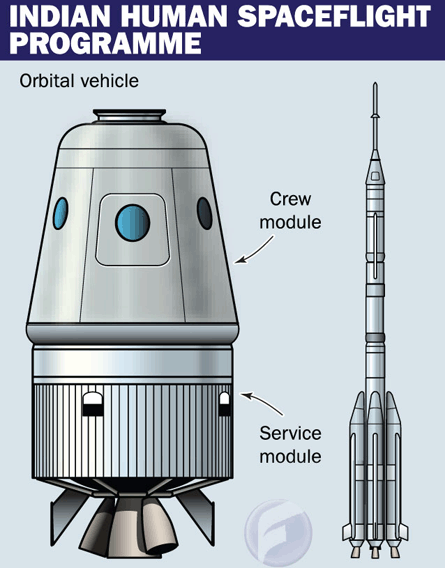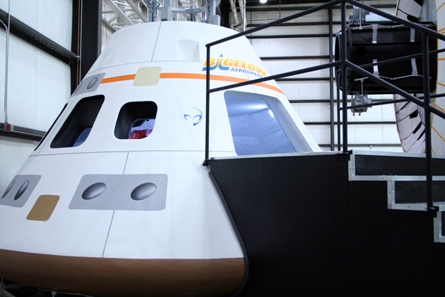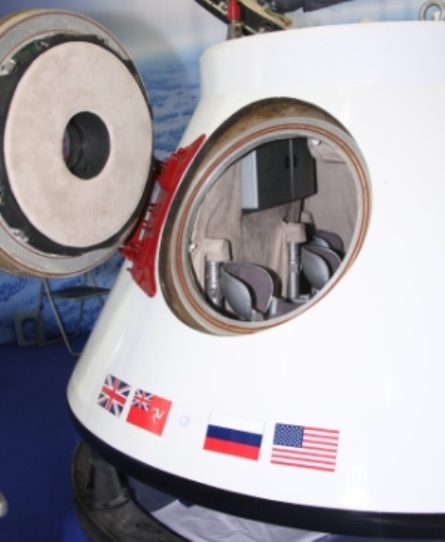The history of human spaceflight has seen just seven operational crewed capsules - Russia's Vostok, Voskhod and Soyuz, the USA's Mercury, Gemini and Apollo and China's Shenzhou.
Almost that many more again are under development today to meet NASA's International Space Station needs and build a budding market for space tourism.
The six under development now are Russia's Soyuz replacement, NASA's Orion crew exploration vehicle (CEV), India's planned three-crew capsule and three commercial projects, from Bigelow Aerospace, Excalibur Almaz (EA) and Space Exploration Technologies (SpaceX).
Russia and NASA's spacecraft are planned to go to the Moon and India's three-man capsule will orbit for a week of research. But where is the market for the three commercial vehicles?
|
|---|
Above: The Indian Space Research Organisation's concept design for its three crew capsule and its Geosynchronous Satellite Launch Vehicle Mark 2 rocket |
|
|---|
Above: Bigelow Aerospace's Orion Lite mock-up made public in August 2009. It is based on NASA's Orion crew exploration vehicle |
SpaceX and Bigelow may compete for NASA's $50 million 10-month Commercial Crew Development programme, which starts in November.
This is not a market but US president Barack Obama's Review of US human spaceflight plans committee is expected to propose in its full report a $2.5 billion crew transport competition that runs from October 2010 to 2014. The committee's summary report was published on 8 September and mentioned the competition but had no budget figure.
|
|---|
Above: Excalibur Almaz exhibited its capsule at the 2009 Moscow air show |
After the Space Shuttle's retirement in 2010, NASA will have to pay Russia for Soyuz seats to reach the ISS unless industry can deliver an alternative.
EA, created in 2005 with support from US and Russian spaceflight veterans, is registered in the Isle of Man and thus not eligible for NASA programmes. But it has its sights set on the space tourism market and reckons its own flights could attract up to 30 customers a year.
A tourism market of that size may not be a fanciful notion. Since 2001, six customers have gone to the ISS with US company Space Adventures, and as far back as 2002 marketing company Futron forecast a market worth over $300 million annually by 2021 with 60 customers a year.
EA has an orbital test scheduled for 2013, Space Adventures is planning one private ISS Soyuz flight that year while Bigelow expects its capsule's first launch in 2012.
EA announced its plans on 18 August at the Moscow air show. Its capsule was developed by NPO Mashinostroyenia and test flown in the 1970s under a Soviet military programme.
The company's Almaz spacecraft will consist of an updated return capsule with new electronics and life support system and a new service module.
EADS Astrium is at an early design stage for the service module that will be habitable and enable week long missions.
EA says that if there is a business case it would launch an updated Almaz space station module, also developed in the 1970s, for research or tourism and its spacecraft would service it.
In August Bigelow announced its seven-passenger "Orion lite" concept, which is based on NASA's Orion CEV. Orion prime contractor Lockheed Martin held meetings on 5 May in Denver, Colorado and 21-22 July in Las Vegas, Nevada last year with Bigelow to discuss the Orion Lite concept.
Bigelow's Washington DC area office director Mike Gold did not confirm the dates but said that US launch provider United Launch Alliance participated and that a 2012 launch was possible: "We are continuing to work diligently on the capsule."
Meanwhile, SpaceX - which points out that its Dragon and its Falcon 9 launcher were designed to NASA man-rating standards - says its cargo flights next year are also tests for human missions.
Given its estimates that it would take about two years to develop the crewed version's launch abort system, a crewed Dragon could also fly in 2012 or 2013 making that timeframe a busy period for orbital transport start-ups.
Source: Flight International






















